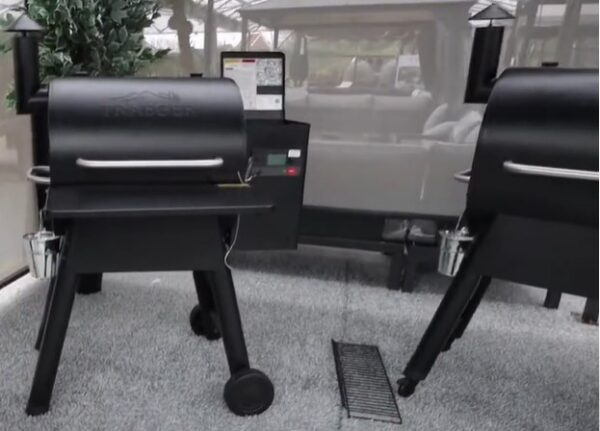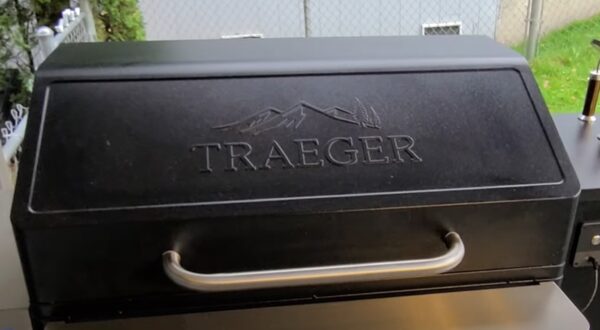If you have a propane tank that feels full but isn’t dispensing gas, it can be extremely frustrating.
Fortunately, there are several common reasons why this may occur and all of them can easily be addressed.
In this article, we’ll take a look at 10 possible causes for your propane tank feeling full but not providing any fuel.
We’ll also explain how to troubleshoot each issue so you can get your gas flowing again in no time.
Why Does My Propane Tank Feels Full but No Gas

1. Improper Tank Installation
Improper tank installation is a common cause of propane tanks feeling full but not being able to dispense gas.
Improperly installed tanks can sometimes leak air into the tank, give a false reading on the pressure gauge, or cause blockages in the lines leading to the tank.
Fix
To ensure proper installation, always use an experienced and certified professional who is familiar with local propane safety codes and regulations.
This will help ensure that your propane tank is installed correctly so you’ll get an accurate reading when it comes time to use it!
Also, be sure to inspect any new or existing tanks regularly for signs of wear and tear or potential leaks.
2. Low Pressure in the Tank
Low pressure in a propane tank can be caused by a number of factors such as a faulty regulator, a blocked jet, or even the tank not being filled properly.
If your propane tank is full but there is no gas, it could be due to low pressure.
Low pressure will cause the gas not to be released from the valve, resulting in an empty tank even when it is full.
Fix
A faulty regulator can be easily fixed by replacing it with a new one and having it correctly installed.
If the jet is blocked, cleaning the jets or replacing them completely can solve this problem.
Finally, if the tank was filled incorrectly or overfilled with too much gas, you may need to empty out some of the gas before being able to use it again.
3. Leakages
Leakages can be a common cause of a propane tank feeling full but not delivering gas.
Leaks in the propane system can occur from a variety of sources, such as faulty connections, damaged hoses, or worn tanks.
These leaks can allow air to enter into the tank, which decreases the pressure inside and reduces the amount of fuel available for delivery.
Fix
To identify leakages, check the entire tank and hose assembly for signs of visible damage such as cracks or tears.
If any are found, they should be replaced immediately by an experienced technician.
Besides, it is important to perform regular inspections of your propane tank and any associated hoses to detect potential issues before they become more serious problems that require major repairs or even replacement.
Taking care to keep your propane system in good condition will ensure that you get maximum performance from it and avoid potentially costly repairs down the road.
4. Blockages in Pipes or Valve
Blockages in the pipes or valves of your propane tank can prevent proper flow of gas, leading to a full tank but no gas come out.
In some cases, dirt or debris can clog the pipe, preventing the flow.
Fix
This issue is usually easy to resolve by cleaning the pipes and valves with a cloth or brush.
More, old or worn-out valves can wear down over time and need replacing in order to ensure proper functioning.
If you’re having trouble locating the cause of a blockage, it may be wise to seek help from a professional.
5. Obstructions on Regulators
Obstructions on a propane tank regulator can cause gas flow to be restricted, resulting in a tank that feels full but does not dispense gas.
The most common obstructions are debris or dirt that builds up within the regulator.
This debris can block small orifices and prevent adequate flow of gas through the regulator.
Fix
In order to remove these obstructions, it is important to regularly inspect and clean the regulator’s components.
This can be done by blowing air through the regulator using an air compressor.
It is also important to remember to check for any damage or wear on the components, as this may also contribute to the obstruction of gas flow.
6. Faulty Regulator
Faulty regulators can be the cause of a propane tank feeling full but not having any gas.
A faulty regulator can cause a leak, meaning that the gas in the tank is being released without being used.
This could be caused by a worn-out rubber seal or an improperly adjusted pressure relief valve.
Fix
To fix this issue it is important to make sure that your regulator is properly installed and serviced regularly.
If you suspect your regulator is causing your problem, you should have a professional inspect it and replace it if needed.
7. Inaccurate Level Indicators
Inaccurate level indicators can be a major cause of why your propane tank might feel full but contain no gas.
This could be due to a faulty or outdated gauge that is not capable of accurately measuring the level of propane in the tank.
Other factors, such as temperature and pressure changes, can also affect the accuracy of the gauge.
Fix
To ensure accuracy, it’s important to regularly maintain and calibrate the gauge according to manufacturer instructions.
Also, if you suspect inaccurate readings from your level indicator, it may be worth having a professional check and replace the device if needed.
8. Outdated Valves
Outdated valves can be a major cause of feeling like your propane tank is full but no gas is being released.
Valves that are too old, worn out, or have been exposed to the elements can become corroded and prevent the gas from flowing through.
When this happens, propane will remain in the tank even though the gauge may show otherwise.
Fix
To ensure that your valves are up-to-date and working properly, check for corrosion or wear and tear on a regular basis.
If a valve appears to be faulty, replacing it with a new one can help restore flow and allow you to use the tank safely once again.
9. Defective Burners
If you find that your propane tank feels full but no gas is coming out of the burners, it could be because the burners are defective.
Over time, mineral deposits can build up on the burner and interfere with its ability to draw fuel from the tank.
Fix
This issue can usually be resolved by cleaning and/or replacing the burner. It’s also important to make sure that all connections are secure and in proper working order.
Finally, ensure that the flow of gas is regulated correctly – too much or too little can both cause problems.
10. Overfilled Cylinders
One possible cause of a propane tank feeling full but not registering any gas is the tank being overfilled.
This can sometimes happen if a technician misreads the gauge when filling the tank or if they accidentally fill it past the maximum capacity.
Overfilling can create a situation where no gas actually registers, but enough pressure is in the tank that it still feels like it’s full.
Fix
Unfortunately, this issue can be hard to diagnose since overfilling usually isn’t visible from the outside of the tank.
To resolve this issue, it is best to contact a professional who has experience troubleshooting propane systems and who can check and adjust the levels of propane in your tank.
Conclusion
Propane tanks are essential and useful tools to have around the house, but it is important to take proper care of them.
If your tank feels full but you notice no gas coming out when trying to use it, there could be a few possible explanations for what’s going on.
In most cases, this issue can be resolved by checking the valves or regulator settings and making sure they are correctly adjusted.
However, if that doesn’t fix the problem then it may indicate an underlying issue with the propane tank itself which requires professional attention from a certified technician.
FAQs
Why does my propane tank feel full?
The propane tank may feel full even though there is no gas in it due to condensation or a faulty valve.
It’s important to check the pressure gauge on the tank to verify that there is still propane inside before attempting to use it.
If the gauge says that there is no propane left, contact your local supplier and have them refill it.
How do you reset a propane tank valve?
To reset a propane tank valve, turn the valve clockwise until it clicks and then wait 30 to 60 seconds before attempting to use the tank.
If you experience any difficulty after resetting the valve, contact your local supplier for assistance.
How do you release pressure from a propane tank?
To release pressure from a propane tank, open the valve slowly and allow the pressure to escape gradually.
Make sure you wear protective gear when doing so and ensure that there is no source of ignition near the area.
Once all the gas has been released, close the valve securely and safely store your tank until it’s ready for use again.
Why is my propane not flowing to my burner?
This could be caused by a clogged burner, a valve on the propane tank that is not completely open, loose connections in the line or an empty tank.
Check all of these factors to determine what is causing your propane not to flow.
Napoleon Grill Lights Not Working
Blackstone Grill Not Getting Gas
Big Green Egg Not Getting Hot Enough


